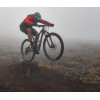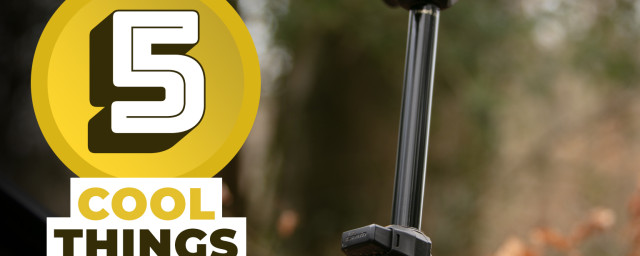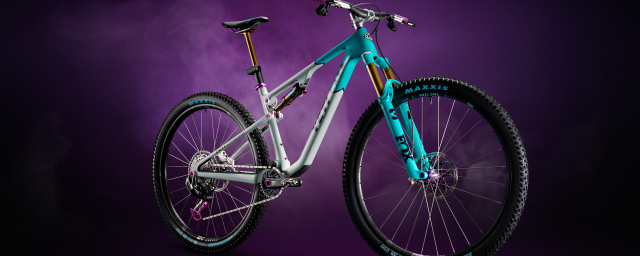Boost spacing explained

Electronics might be the dominant theme in current off-road cycling component development, with wireless drivetrains and intelligent suspension, but the most critical standards remain mechanical.
- Bicycle dropouts - every standard explained
- Types of mountain bikes: every MTB category explained
- Internal gear hubs - everything you need to know
Although ‘Boost’ sounds like something that would only be a feature on an e-bike, where the ’boost’ function is often a mid-drive motor setting for powering up the steepest climbs, it's an axle standard for most off-road bike builders. And a very important one, at that.
The best gravel and mountain bikes are those which develop in harmony. If you increase frame stiffness, consider how it will impact ride comfort. Fit the best and stickiest compound tyres, and consider how that increase in traction might affect the overall loads on each end of the bike when leaning through high-speed corners.
Hubs mediate many terrain forces and loads that build through a bike when riding off-road at speed. They also anchor the wheel build and although most riders think of spoke count and rim size as determining how strong a wheel will be, the hub width creates the foundation for a wheel’s structure.
As mountain and gravel bikes have integrated bigger wheels, better tyres, and the most sophisticated suspension, hubs have had to adapt, too. The hub sizes and spacing that supported 26-inch wheel mountain bikes for decades can’t have the same mechanical properties for 29-inch wheel frames and forks. That’s why Boost exists. It is the larger axle standard developed over the years, becoming commonplace through the mid- to late 2010s – and it matters.
Quick-release convenience – and limits
For many decades off-road bikes were extremely vulnerable to punctures. Riders were accustomed to stopping and removing wheels to make puncture repairs. This mandated product engineers to prioritise easy wheel removal as the primary customer need regarding hub design.
Quick-release (QR) axles were the solution. Although they weren’t robust for extreme downhill riding, for most cross-country riders, QR axles were adequate – and most importantly, they made puncture repair very easy by facilitating rapid wheel removal.
As mountain bikes started to develop into more diverse segments, the limitations of QR axles became evident. More progressive trail and enduro bikes, with longer-travel suspension and better tyres, increased the riding loads – testing the limits of QR axles to resist lateral forces.
On a severely technical enduro trail QR axles can work loose, which is unsurprising as their mechanical design is prioritised for easy removal. And a loose QR axle means an unsecured wheel and potential mechanical disaster or crash when riding.
Bigger wheels – bigger loads
How did we get from narrow QR axles to larger Boost hubs? The 29-inch wheel revolutionised mountain biking. It allowed riders more climbing traction, braking confidence, and much better control in technical terrain.
For wheel and frame designers, 29-inch wheels did create issues. QR axle systems, even when widened from the traditional 135mm width to 142mm, struggled to deal with the speeds and terrain loads that 29-inch wheels could transfer from the trail into the bike.
Early cross-country 29-inch wheel bikes didn’t suffer as much but trail and enduro bikes were demanding on wheels, with riders occasionally feeling QR axle deflections when rushing through rock gardens at speed. The mountain biking industry had discovered its ideal wheel size, regarding tyre contact patch and traction, but the 29-inch wheel diameter was overwhelming spokes and QR axles.
There was an upgrade to 142 x 12mm thru-axles in 2010, which helped, but suspension and frame design were progressing too rapidly in the trail and enduro categories. In mountain biking, bigger is often better, and this was to become evident when wheel industry designers created Boost.
Small margins – big difference
Tabulate all the off-road axle standards and they don’t look that dissimilar. The difference between Boost and conventional 142mm axles is only 7mm of width in the rear. With forks, it’s more: growing from 100- to 110mm. But how can such small margins make such a significant difference to off-road riding?
Mountain bikers knew that wider axles made stronger wheels. This was not a new realisation from the 29-inch era. It had been proven with 26-inch downhill mountain bikes, which had been using oversized axles for a long time. Single-speed hubs, used by dirt jump riders and single-speed recreational riders, reinforced this point.
A single-speed hub had a wider flange width than a standard rear of the same size, because it doesn’t have to sacrifice space for a cassette. With only a single cog to accommodate, instead of a multi-geared cassette, 142mm single-speed hubs could build much stronger wheels, thanks to their wider flange spacing and better spoke bracing.
Single-speed hubs proved an important point: flange width matters most. As drivetrain options added more gears in the early 2010s, going from 1x10 to 1x11 and, ultimately, 1x12, there just wasn’t enough space on a 142mm hub to have a bigger cassette and wide enough spoke flange positioning.
Not deflecting the issue
The first generation of longer-travel 29er trail and enduro bikes were troubled, mostly due to their fragile wheel and frame packaging issues. Engineering advanced suspension kinematics into frames with very limited clearances and narrow hubs, created bikes that rode awkwardly with wheels with poor spoke bracing and strength.
Long-travel 29ers and 1x11/1x12 drivetrain created the need for a better mountain bike hub standard, creating Boost 148 x 12mm rear and 110 x 12mm front axles. Those few millimetres of additional hub width moved the flanges apart. The result? Increased spoke bracing angles, which mean a better relationship between the hub body, flange eyelets, and spokes, created a stronger structure – making for much stronger wheels. And importantly: enough space for those bigger 1x drivetrain cassettes.
Boost rear wheels resist much greater lateral flex than QR or 142mm hub rear wheels ever could. That means more accurate steering and tracking when riding technical trail sections at speed. The evolution of mountain bike wheels to 29-inch diameter created incredible benefits for stability and traction. Still, it wasn’t until Boost axles became commonplace that the wheel size’s potential was truly realised.
Why didn’t Boost happen sooner?
Extreme freeride mountain bikers and their wheel builders knew that wider hubs made for stronger wheels. This knowledge was commonplace for many years before Boost was developed.
‘If everyone knew, why didn’t wider hubs happen sooner for 29ers?’ Few category managers envisioned how dominant 29-inch wheels would become across all mountain biking segments. After the first 29er trail bikes were introduced, most enduro, downhill racers and freeride mountain bikers believed that 27.5-inch wheels were ideal for their needs – and that 29-inch wheels were superfluous.
The idea that 29-inch wheels would never become popular for extreme trail riding or downhill mountain biking, meant that institutional knowledge in the gravity mountain biking community wasn’t applied to a broad spectrum design approach.
In the quest to create stronger 29-inch wheels for mountain biking, product managers should have benchmarked a proven technical outcome in the downhill and freeride mountain bike communities: wider hubs and bigger axles make stronger wheels.
Better in every way
Boost axles have made mountain bikes better in every way. Wheels ride much better at the lean angles riders need to enjoy their bikes' potential and track with much greater stability in rocky, rooty terrain.
Boost wheels are also stronger, meaning there’s less chance of breaking a spoke when you build up the courage to ride off that medium drop of little jump on your local trail network. If you never venture beyond a mild jeep track for your off-road cycling, riding QR hubs, or the 142 x 12mm thru axle standard, are entirely adequate.
The truth is that every mountain biker develops into a singletrack trail rider of sorts. When you want to increase those descending speeds and explore more technical trails, the stronger wheel builds possible with Boost front and rear hubs make a big difference.
Beyond the increased steering confidence and stability of Boost wheels, there’s the convenience factor. They’re much easier to remove and slot back into place without clipping brake rotors against calipers or accidentally overtightening QR mechanisms.
Packaging constraints are a genuine challenge for all industrial designers and engineers in the off-road cycling industry. Boost has helped riders free up space in the rear triangle by allowing for shorter but wider chain and seat stays, delivering all the mud clearance required with strength but none of the flexibility. Or the bus-like chainstay length, a feature of early 29er mountain bikes, degrading their agility.
\Without Boost axles creating stronger wheels, e-bikes would have been a disaster on technical trials – suffering enormous wheel flex and breaking spokes with alarming frequency. The development work done by pioneering long-travel 29er mountain bike designers in the mid-2010s, proving the value of Boost front and rear axles, enabled first-generation trail bike e-bikes to be much better.












